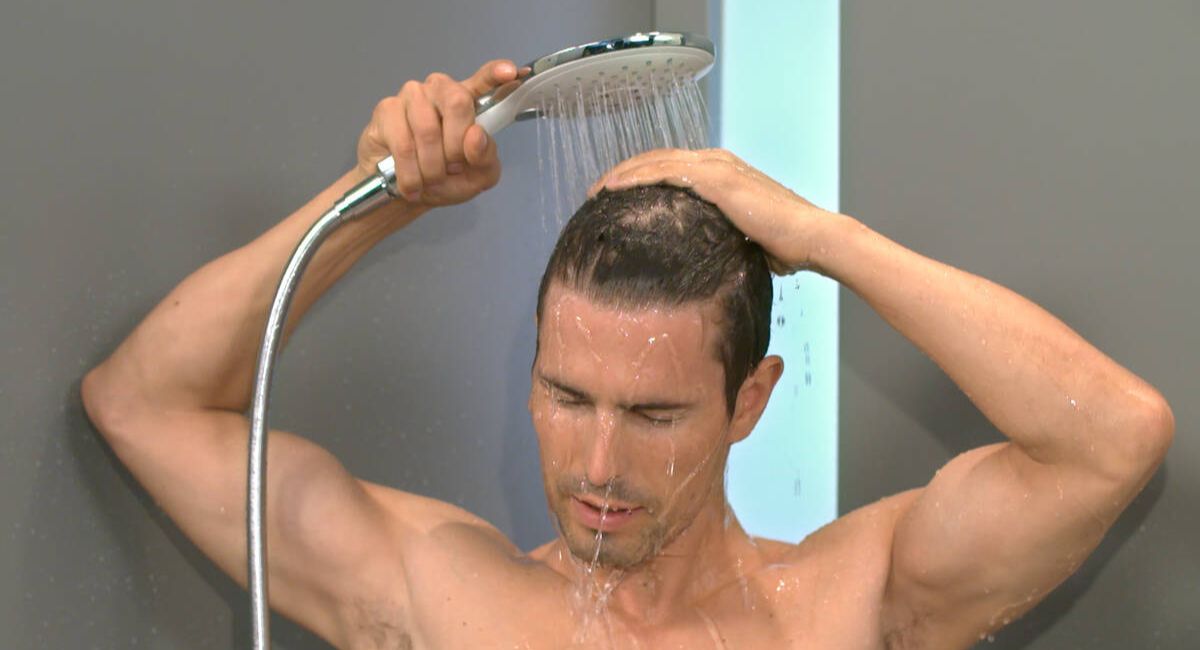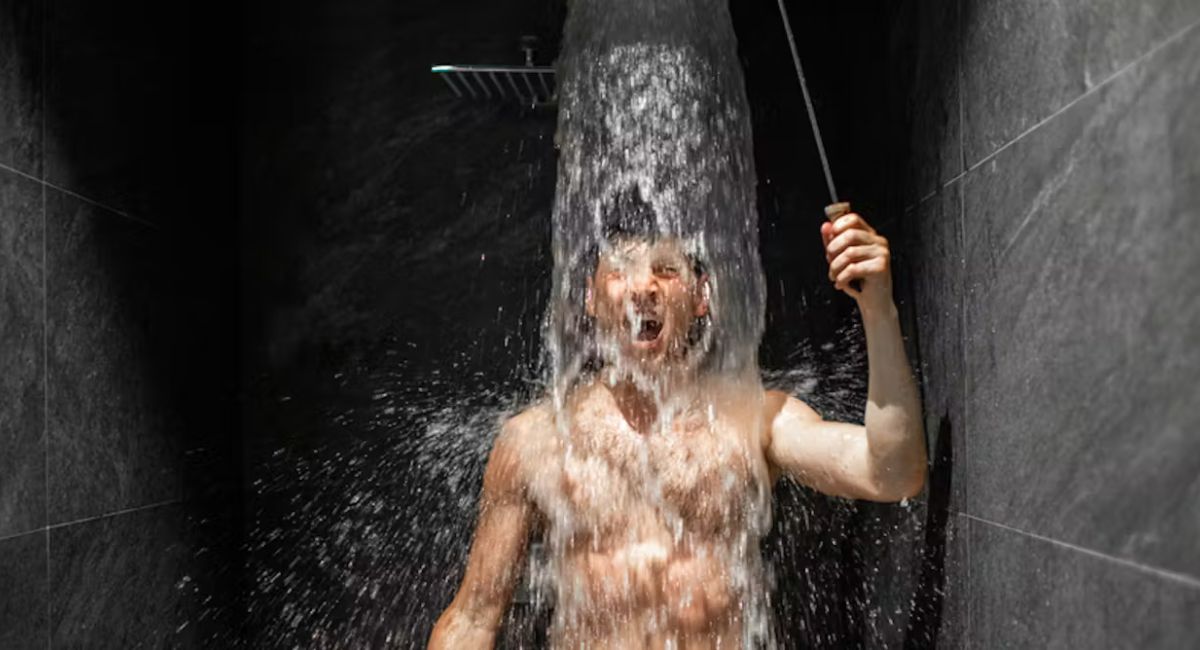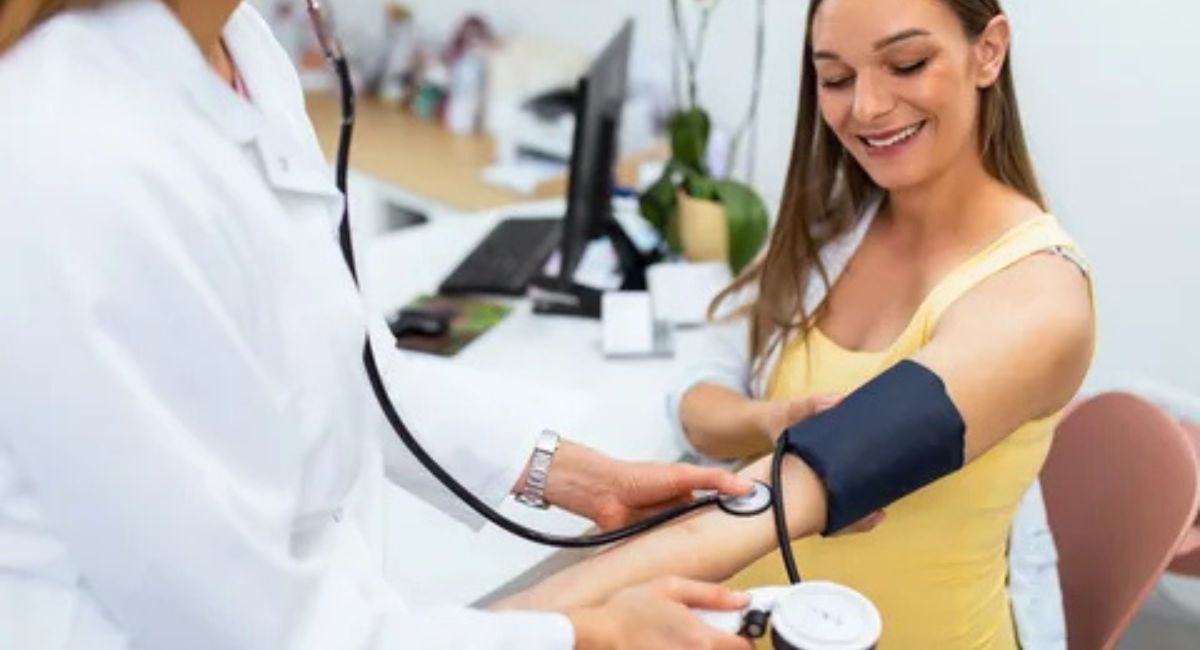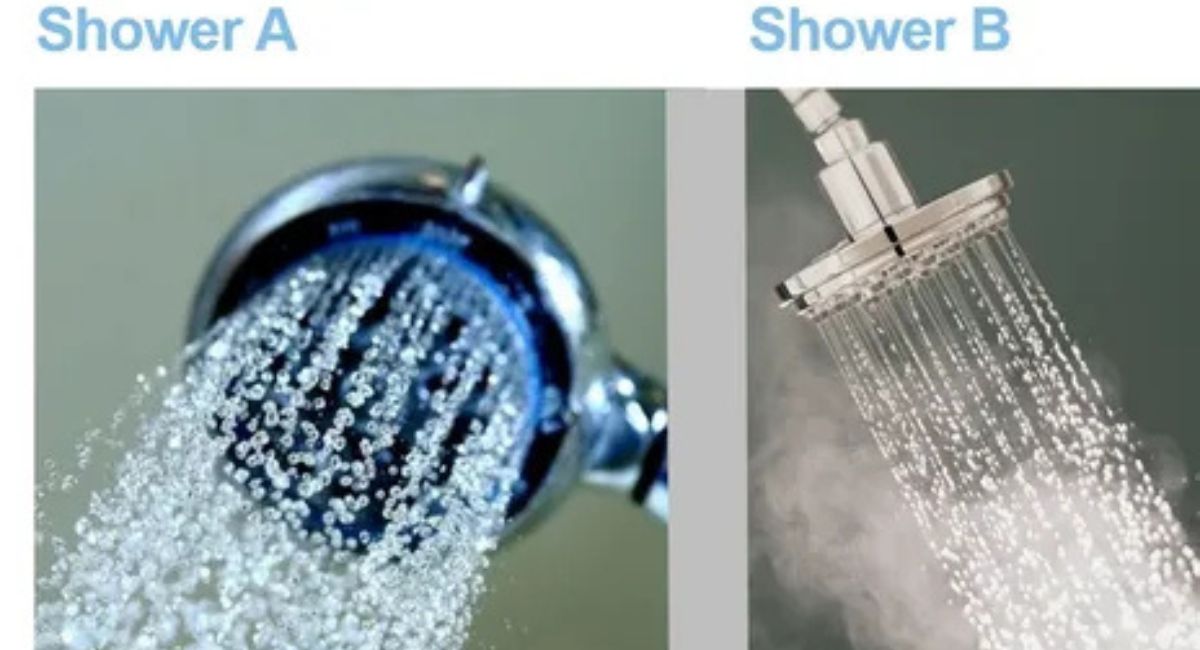I’ve always wondered if I should take a hot or cold shower for high blood pressure. Sometimes after a long, stressful day, a hot shower feels relaxing but I worry it might make my pressure worse. Other times I think a cold shower could wake me up and be healthier, but I’m not sure if that’s safe either. If you’ve been caught in the same confusion, you’re definitely not alone.
This post explains everything you need to know about taking a hot or cold shower for high blood pressure. You’ll learn how each type affects your heart, why temperature matters, and simple tips to shower safely. By the end, you’ll know which shower works best for your health and how to protect your blood pressure every day.
Understanding How Showers Impact Blood Pressure
Showers change your skin temperature quickly, which forces your body to adjust. When you take a hot shower, your blood vessels relax in a process called blood vessel relaxation, letting blood flow more freely. That tends to lower your blood pressure for a short time even though your heart rate might rise as your body works to keep cool. Hot water triggers warm water therapy effects, improving circulation and relaxing muscles, both useful for cardiovascular health. On the other hand, a cold shower causes blood vessel constriction, which squeezes your vessels, pushing blood pressure up temporarily. This is part of your sympathetic nervous system response, designed to protect vital organs in cold conditions.
In research, cold water exposure is often found to cause a temporary increase in both heart rate changes in hot vs cold showers and blood pressure spikes in hot showers at extreme heat. For example, studies show that immersion in cold water or sudden exposure to cold boosts blood pressure briefly before settling back. Similarly, very hot water over a certain temperature can overheat your body, strain your heart, and lead to potentially risky low blood pressure or fainting if you have hypertension. Safe shower practices for hypertension must balance these effects so you don’t trigger dangerous swings in blood pressure.

Hot Showers vs Cold Showers – Key Differences for Blood Pressure
Hot showers reduce pressure primarily by causing vasodilation during showers, meaning blood vessels open up. That helps ease the load on your heart, making blood flow easier. Many people feel relaxed after a hot shower; the drop in pressure and warm, soothing environment helps with stress reduction techniques. However, if the water becomes too hot, your temperature rises too much, and your body may respond with elevated heart rate and possible risks of extreme water temperatures.
Cold showers do almost the opposite. The body responds with vasoconstriction during showers, narrowing blood vessels to conserve heat. This raises blood pressure temporarily, increases heart rate, and triggers the body’s stress response. Cold showers boost effects of cold showers on circulation and can help with recovery after exercise, inflammation reduction, or alertness. But for someone with uncontrolled high blood pressure, that sudden rise might pose danger. Thus, key differences lie in immediate physiological response, comfort, and long-term effects.
How Hot Showers Affect Blood Pressure and Circulation
Hot showers lead to blood vessel relaxation. When your vessels expand, they reduce resistance to blood flow, so blood pressure can drop. This helps your heart work more efficiently. For instance, bathing in hot springs at around 40°C has been shown to decrease peripheral vascular resistance and lower both systolic and diastolic pressures while increasing cardiac output moderately. Warm water therapy like that supports cardiovascular health by promoting healthy blood flow, reducing stiffness in vessels, and easing tension in the body.
However, hotter water—say above 41-42°C (≈106-108°F)—begins to stress the system. Your heart rate increases faster, and your blood pressure may spike instead of drop. This stress can overwhelm if you have heart disease or poorly controlled hypertension. Studies reveal that while hot baths often lower nighttime blood pressure in older adults, the heat must stay within safe limits.
How Cold Showers Affect Blood Pressure and Heart Function
When cold water hits your skin, your blood vessels constrict, increasing resistance and forcing your heart to pump harder. Your heart rate goes up. This is part of the body’s protective sympathetic nervous system response to avoid heat loss. Research shows cold water exposure yields a quick rise in both heart rate and blood pressure. Fortunately for many, these changes return to normal after a few minutes. Cold showers also improve blood flow over time by alternating constriction and dilation, and that may help with circulation and reduce inflammation.
On the flip side, cold showers can pose risk for people with heart conditions. Sudden exposure to cold, especially in a shower or pool, can trigger arrhythmias or undue strain because of rapid heart rate changes in hot vs cold showers combined with sharp changes in blood vessel size. For hypertensive patients, the temporary surge might aggravate their condition. It’s why many health experts urge caution and a gradual approach.
Factors That Influence the Effect of Showers on Blood Pressure
Your age, current health, and medication all play big roles in how your blood pressure reacts to hot or cold showers. Older adults have less flexibility in blood vessel walls, so sudden changes in temperature can have stronger effects. If you take blood pressure medication, especially ones that affect your heart rate or vascular tone, the responses to heat or cold might be magnified. Lifestyle changes to control blood pressure—like weight loss, exercise, good diet—help your body handle temperature stress better.
How long you shower, how often, and how extreme the temperature is also matters. A two-minute cold shower or brief contrast between hot and cool may have different effects than a long hot steam followed by ice water. Also, whether your hypertension is well managed or uncontrolled changes risk. Those with stable blood pressure and under care tend to tolerate warm or mildly cold showers better than people whose blood pressure fluctuates widely. Environmental humidity, water quality, and pre-existing conditions like heart disease influence the outcome too.
Tips to Safely Take Showers if You Have High Blood Pressure
First, choose a warm water temperature rather than very hot or very cold. Warm showers reduce sharp shifts in pressure and are gentler on your heart. Keep the water below about 40°C (104°F) if possible; avoid scalding hot water that might trigger a blood pressure spike. Second, limit shower time—10 to 15 minutes is generally safer. Long exposure to heat or cold increases risk of swings in pressure or stress on your cardiovascular system.
To try cold showers safely, ease in gently. For example, start with warm water, then gradually lower temperature for the last minute or two. That helps your body adjust. Practice contrast showers (alternating between warm and cool) if your doctor agrees, since that can train your blood vessels and might improve your resilience. Make sure you are well-hydrated, avoid taking showers right after heavy exercise or large meals, and always monitor how you feel. If you ever feel chest pain, dizziness, or overwhelming discomfort, stop immediately.

Warning Signs You Should Not Ignore During Showers
You should not ignore sudden dizziness or lightheadedness. If you begin to feel your heart pounding, racing, or skipping beats, these may be signs that your heart is under too much stress. Watch for excessive sweating, cold sweats, or feeling faint. Also, if your blood pressure spikes (you might feel headache, tightness in chest, or short breath), the shower might be too extreme.
Severe symptoms like chest pain, palpitations, fainting, or trembling should prompt immediate attention. Do not assume things will pass. These warning signs mean you may need medical consultation for blood pressure issues because your heart might not be tolerating big temperature shifts well. Always have a plan: keep a thermometer on hand, test water temperature before you start, and consider letting someone know if you are experimenting with cold or hot showers.
Complementary Therapies to Support Healthy Blood Pressure
Lifestyle changes to control blood pressure have strong support in studies. Eating a diet low in sodium, rich in whole grains, fruits, and vegetables aids greatly. Exercise, such as walking, cycling, yoga, or swimming, strengthens your cardiovascular system and enhances your body’s ability to handle stress. Stress reduction techniques like deep breathing, meditation, or progressive muscle relaxation help lower baseline blood pressure by calming the nervous system.
Natural remedies for hypertension include using elements from Ayurveda for blood pressure control, such as herbs like ashwagandha, garlic, or bitter melon, combined with dietary changes. Hydrotherapy for hypertension—like warm foot baths or alternating hot-cold compresses—may also support the system. These do not replace medications, but when done safely, they reinforce your body’s ability to regulate pressure, reduce reliance on meds (under doctor supervision), and improve general wellness.
When to Seek Medical Advice About Blood Pressure Changes
If after a shower you notice your blood pressure remains unusually high for several hours, or you experience repeated warning signs like chest pain, palpitations, severe headaches, or vision changes, you should contact your primary care doctor or a cardiologist. Regular monitoring—keeping a log of your readings, noting how temperature changes in showers affect you—helps your doctor tailor treatment.
People with other conditions such as heart disease, kidney disease, or those on multiple blood pressure medications should talk to their healthcare provider before making changes to their shower routines. Chronic uncontrolled hypertension needs medical oversight. Wellness centers or clinics for high blood pressure often offer diagnostic services like ambulatory blood pressure monitoring, stress tests, and heart risk assessments; make use of those services to ensure your safety.

Local Blood Pressure Management Clinics and Wellness Centers
In the U.S., many clinics for high blood pressure management are available through hospitals, community health centers, and specialized cardiovascular wellness centers. These places help monitor your blood pressure regularly, adjust medications, and teach safe practices such as shower safety tips for hypertensive patients. A table might help you see what services to expect:
| Service Offered | What It Does | Why It Helps |
|---|---|---|
| Ambulatory Blood Pressure Monitoring | Measures BP over 24 hours | Captures fluctuations caused by temperature changes |
| Stress & Lifestyle Counseling | Diet, exercise, stress reduction | Improves long-term cardiovascular health |
| Hydrotherapy or Warm Baths Programs | Guided warm water exposure | Helps with vasodilation and relaxes blood vessels |
| Diagnostic Cardiac Tests | ECG, echocardiogram | Ensures heart is safe under temperature stress |
Seek clinics with certified cardiologists, patient education programs, and strong reviews. Many wellness centers offer packages that combine natural remedies for hypertension with medical oversight, which can help you feel more in control.
FAQs About Hot or Cold Shower for High Blood Pressure
Q: Can hot showers raise blood pressure?
A: Hot showers can sometimes cause your blood vessels to widen, which may briefly lower blood pressure. However, very hot water can also stress your heart, so it’s best to keep the temperature moderate.
Q: Do cold showers help lower blood pressure?
A: Cold showers can cause blood vessels to tighten, which may temporarily raise blood pressure. For some people, alternating hot and cold can improve circulation, but always check with your doctor first.
Q: Which is better for high blood pressure — hot or cold showers?
A: Most experts recommend lukewarm or mildly warm water if you have high blood pressure. Extreme temperatures on either end can put extra stress on your heart and circulation.
Q: Can switching water temperatures improve circulation?
A: Alternating between warm and cool water may help boost blood flow for healthy adults. But if you have high blood pressure or heart concerns, talk to your doctor before trying contrast showers.
Q: Are hot or cold showers safe for people on blood pressure medication?
A: Generally yes, but medications can make you more sensitive to sudden temperature changes. Always start with milder temperatures to see how your body reacts.
Q: How long should I stay in the shower with high blood pressure?
A: Keep showers between 5–10 minutes with a comfortable temperature. This helps you stay relaxed without overloading your circulatory system.
Q: Can showers replace medical treatment for high blood pressure?
A: No. Showers can support relaxation and circulation but they don’t treat high blood pressure. Stick to your prescribed medication and lifestyle changes while using showers as a complement.
Q: Are there any special tips for showering with high blood pressure?
A: Yes. Avoid very hot or icy water, rise slowly from sitting or bending, and keep the bathroom ventilated to prevent dizziness or lightheadedness.
Conclusion
When comparing hot vs cold shower for high blood pressure, there is no one-size-fits-all answer. Hot showers offer benefits through warm water therapy, easing tension, relaxing blood vessels, and helping with stress; yet too much heat may trigger blood pressure spikes in hot showers. Cold showers may boost circulation and invigorate you but cause temporary rises in pressure and heart rate, especially if your system isn’t used to that shock.
To decide which works best for you, start gently, monitor how your body responds, include lifestyle changes to control blood pressure, and use natural remedies safely. Always keep safety in mind, and consult medical experts if you have ongoing high blood pressure concerns. In many cases, combining a warm shower routine, moderate exposure to cooler water, plus good hypertension management and cardiovascular health practices gives the best results. Take care of yourself; a shower should refresh, not stress.

